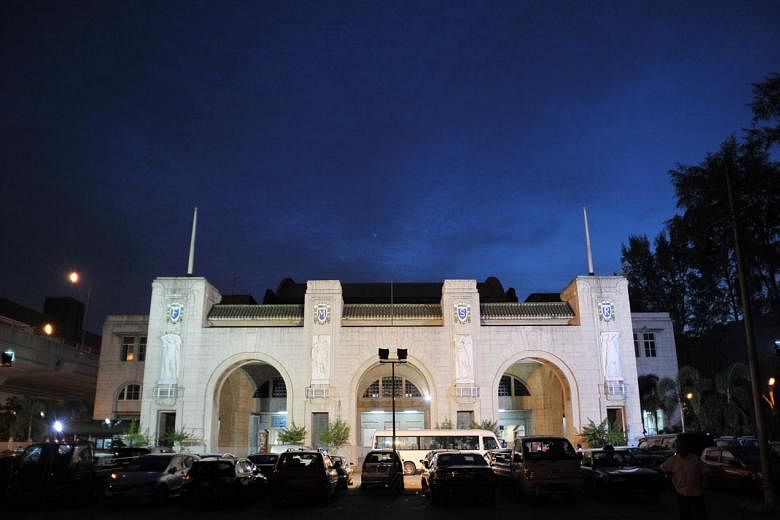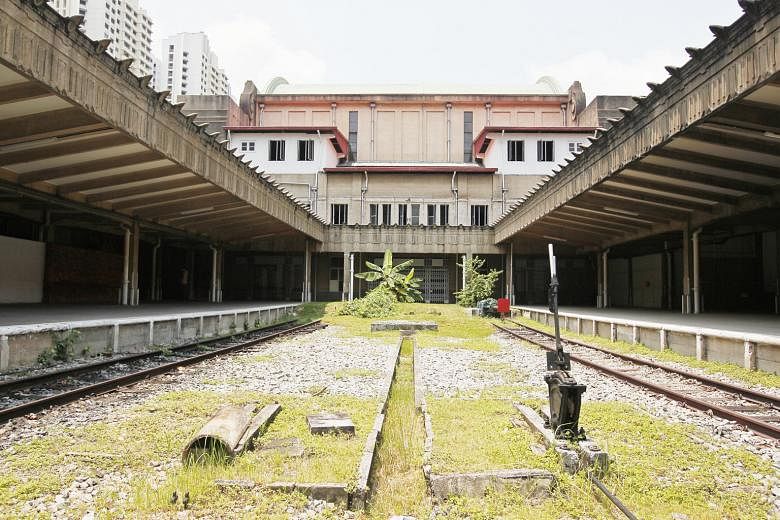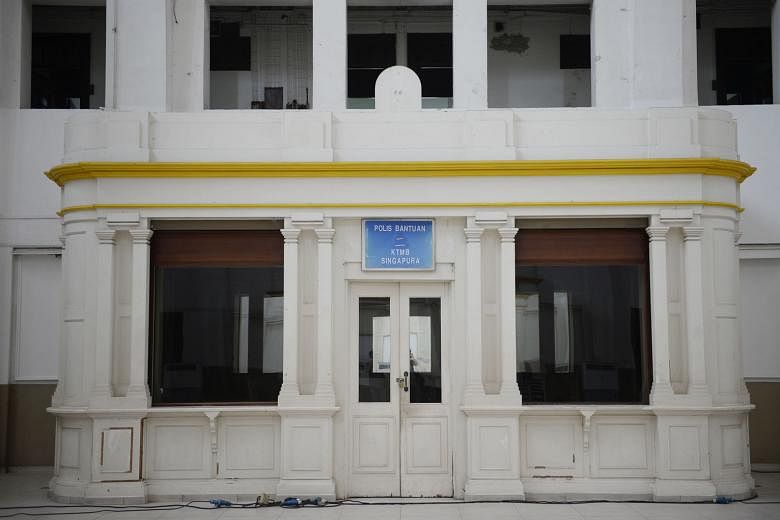When it comes to heritage buildings, there are few in Singapore that tick all three boxes of architectural importance, rich history and social impact like the former Tanjong Pagar Railway Station does.
That is how Mr Ho Weng Hin, 43, feels about the station in Keppel Road, which was gazetted as a national monument in 2011. Mr Ho, an architectural restoration specialist, leads a team of consultants from Studio Lapis in restoring the old station building and its two platforms to their former glory.
For 79 years, the passenger station was a site of teary farewells and joyous reunions as the final stop for trains run by the Malaysian rail operator Keretapi Tanah Melayu (KTM).
"When I was a student, I used to take the train with friends for holidays into Malaysia all the time. It still holds many memories for me and for many others," said Mr Ho.
The building first opened its doors to the public in 1932 when Singapore was a British colony.
The first brick was laid on reclaimed land in 1929 by the Societe d'exploitation des etablissements Brossard-Mopin, a Parisian construction firm that maintained offices across Asia then. On May 2, 1932, then Governor Cecil Clementi officially opened the station.
With its mix of art deco and neoclassical design by Serbian architect D. S. Petrovitch, the three-storey building looked out of place at that time.
Those were the days of rickshaws and horse-drawn carts, where rail systems were vital vessels of commerce. Cargo was hauled between steamships moored at the docks at Tanjong Pagar and the trains arriving at the station.
Goods were then moved up the 700km-long KTM West Coast line terminating at Padang Besar railway station near the Malaysia-Thailand border in Perlis, Malaysia.
But more than just a place for business and transport, Tanjong Pagar Railway Station served as a centre for the community.
For more than 60 years until 1993, the upper floors of the station housed a 34-room hotel, where many dignitaries from Malaya and Britain stayed. One World War II-era video showed Japanese troops marching at the station during the Occupation, said Mr Ho.
After the war, the railway station and some 200ha of railway land went under the control of Malaysia, because of a legacy 1918 ordinance by the British colonial government.
The sprawling 159,076 sq m plot of land where the station stood posed a challenge to urban planners in Singapore. As it was under Malaysian administration, the Singapore Government could not do anything to it.
Over the years, land prices in Tanjong Pagar soared.
The sovereignty issue was addressed only in 1990, when the Singapore and Malaysian governments signed a bilateral accord. Under the Points of Agreement, the two countries would trade Tanjong Pagar Railway Station and the railway land for parcels of Singapore land.
The deal began its implementation in 2010, with the two countries issuing joint statements.
The last train departed from the station - driven by the Sultan of Johor, Sultan Ibrahim Sultan Iskandar - on June 30, 2011, and Singapore gained ownership of the land at the stroke of midnight.
-
1932
The year Tanjong Pagar Railway Station opened its doors to public.
1990
The year its sovereignty issue was addressed, when the Singapore and Malaysian governments signed a bilateral accord.
2011
The year it was gazetted as a national monument.
The Singapore Government then announced plans to redevelop the former station into the Rail Corridor, with a new Cantonment MRT station on the Circle Line 6 to serve as its gateway.
The new MRT tracks, which are slated for completion in 2025, will lie in tunnels underneath the land where the old KTM tracks ran.
Based on a winning proposal by local firm MKPL Architects and Chinese firm Turenscape International, one entrance to the Cantonment MRT station could be built between the original railway platforms, the Urban Redevelopment Authority announced in 2015.
Mr Ho said that only the original building and 80m of the two platforms have been gazetted as a national monument, and will be left in their original form. The platforms were originally 300m and 280m long.
With the MRT station and Tanjong Pagar Railway Station construction sites located next to each other, there could be potential negative effects, such as tunnelling work damaging fragile structures.
"While the construction works will surely have an impact, the agencies have carried out detailed studies and have put in place strong mitigation measures to minimise them," said Mr Ho.
Most fragile are the six murals made out of about 8,000 hand-painted ceramic tiles from England that depicted the station's original contribution to Singapore's economic activities, such as tin mining and rubber tapping.
Said Mr Ho: "We have taken pains to build a protective case around the murals, to catch a tile if it falls out."




